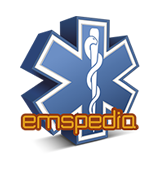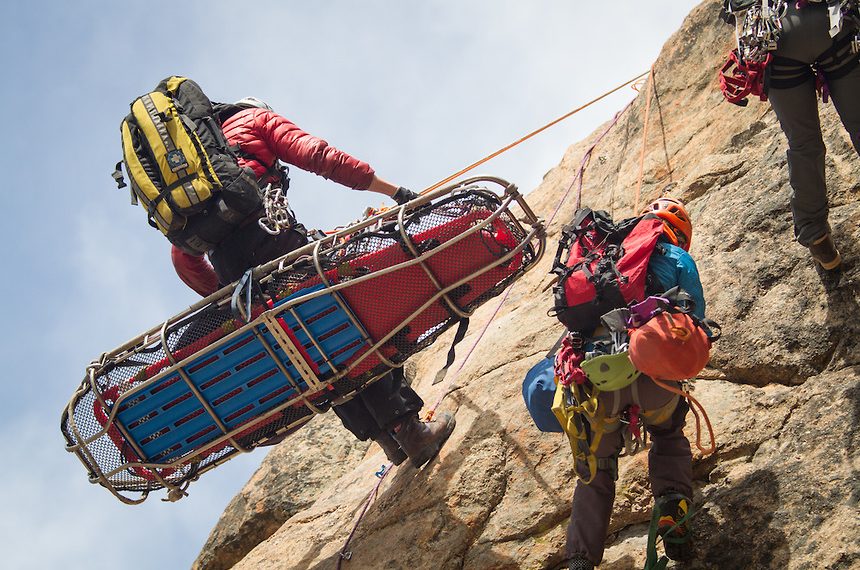The 10 Commandments: “The Keys To Success In Providing Effective Remote Medical Care”
A Short Course In Wilderness, Remote & Expedition
Medicine Concepts
Dr Keith Brown
Striving to master even one of the Knowledge – Skills – Experience–Improvisation elements of the remote medical care paradigm may seem an overwhelming, perhaps even impossible task.
However, some areas are clearly of greater importance than others. We have identified these critical elements as the “10 Commandments” of effective remote medical care. These identify and prioritize the most critical Knowledge – Skills – Experience – Improvisation elements for you. Let’s introduce them now :
- Leadership
- Rapid Assessment
- Bleeding Control
- AirwayControl
- Neurologic Stabilization
- Orthopaedic Stabilization
- Pain Control
- Infection Control
- Metabolic Control
- Sanitation & Hygiene Control
Simple enough, right? If only! Mastery of these ten topics is the work of years, if not a lifetime. Yet competence in all of these is the goal of our programs. Let’s briefly examine each of these 10 commandments.
Commandment #1 – Leadership
The first, most important, and the most difficult commandment to learn is leadership. You manage things, you lead people. Leadership encompasses many elements, including:
- Direct leadership of your team to accomplish the goals and objectives of your remote medical care mission. Being a team leader.
- Followership, & is dedicated to doing whatever is needed. Being a team player.
- Fear & stress control in yourself, your team, and your patient. Panic kills, control of fear protects both you and your team. Stress control is obtained through both training and experience.Understanding the concept of the “Risk: Benefit Equation” and being able to apply it to say “No” when needed. Protecting the team.
- Becoming comfortable with the concept of “Purposeful Chaos” and maintaining composure, control, and class during extraordinarily difficult circumstances.
Commandment #2 –Rapid Assessment
Our second point is that you must be able to perform rapid and accurate assessments – assessments of several things, often simultaneously. You must be able to assess, and reassess:
- Scene safety. This includes getting a global impression of the scene as well as seeking out clues to mechanisms of injury and illness; identifying actual and potential hazards; and identifying actual and potential resources for the management of the problem.
- Patients, using our “TABC2D2E5T” methodology that we will teach you in our programs. In cases of multiple patients, you need to be able to triage and assign priorities.
- Your team. Safety. Mental & physical health status. Stress and fatigue levels. Hydration, nutrition, and waste status.
- Yourself. Safety. Mental and physical health status. Stress and fatigue levels. Hydration, nutrition, and waste status. Be honest with yourself, and remember Commandment #1 – Leadership – you must care for yourself so that you can care for your team.
Commandment #3 –Bleeding Control
One of the most lethal problems to address in remote medical care is the ability to control massive haemorrhage. There are numerous techniques that you will learn and will be used in the field, including:
- Direct pressure and binding/packing techniques.
- Chemical hemostasis and thermal cautery techniques.
- Rational, early tourniquet use and removal techniques
- Ligation, surgical control techniques, and adjuncts.
Commandment #4 –Airway & Breathing Control
Potentially one of the most difficult problems in remote medical care is the ability to control massive haemorrhage. There are numerous techniques that can and should be used in the field, including:
- Nasal airways and improvised upper airway controls.
- Surgical cricothyroidotomies in low-light, confined space, and other difficult environments.
- Retrograde intubations in low-light, confined space, and other difficult environments.
- Various ‘blind’ and direct adjunct intubation measures
- Ventilation management in low-light, confined space, and other difficult environments.
Commandment #5 –Neurologic Stabilization
It is a particular and unique aspect of remote medicine that we must be able to rapidly and reliably diagnose patients with a spine injury, especially cervical spine injury. To do this, excellent skills and specially designed protocols are needed to:
- Conduct accurate neurologic evaluation of the patient in low-light, confined space, and other difficult environments.
- Systematically clear the patient of a possible spine injury with a high probability, thus avoiding the need for spinal immobilization.
- Reliably immobilize and manage a patient in spinal immobilization in all conditions and for extended periods of time.
Commandment #6 –Orthopedic Stabilization
Orthopaedic injuries constitute a large percentage of the trauma conditions encountered in remote medical care. Providers must have extensive training and experience in:
- Diagnosis of fractures, dislocations, sprains, strains, and related conditions without the use of radiology studies.
- Rapid, safe, and comfortable reductions of fractures and dislocation to minimize long-term injury.
- Effective splinting and casting techniques that maximizes the patient’s function and the ability to care for themselves.
Commandment #7 – Pain Control
This is critical. Quite apart from the comfort of our patients, the pain has a significant negative impact on a patient’s shock status, as well as how they may be able to be managed or evacuated, and ability to care for themselves. Several specific areas of field pain management to be mastered include:
- IV sedation & IV anaesthesia.
- Regional anaesthetic blocks, including dental skills.
- Use of various oral & topical medications, including prescription, nonprescription, and indigenous therapies.
- Adjunct therapies such as TENS units, iontophoresis, and electric-stimulation.
- Hypnosis, biofeedback, and related mind -body pain control modalities and techniques.
Commandment #8 – Infection Control
Damaged tissues require prompt and specific treatment in the remote setting to minimize the risk of local infection and/or systemic sepsis. Excellent wound care, removal of foreign material, and debridement of non-viable tissue are needed. You will learn:
- Wound care and repair, including rotations, small grafts, flaps, and plastic surgery grade repair.
- Rational infection control, prevention, antibiotic use, & indigenous alternatives for wound care.
- Diagnosis & treatment response monitoring via remote laboratory tests.
Commandment #9 –Metabolic Control
The remote environment puts immense stresses on patients, above and beyond their illness or injury. Their needs must be met to provide the best care and ensure optimum possible outcomes. In particular, you must be able to control the patients:
- Fluid/hydration and electrolyte status.
- Nutrition status.
- Body temperature and thermogenesis capability.
Commandment #10 – Sanitation & Hygiene Control
Humans produce waste, and it must be dealt with, both to protect against medical complications and to protect the general mood and confidence of the patient. In particular, we will need to manage, eliminate, or control exposure to:
- Human waste products.
- Food preparation for waste.
- Medically contaminated waste.
- Pests & vectors attracted by the above.
- Learn the preparation and disinfection of drinking and cooking water.
By using the ’10 Commandments’ of remote medical care you can:
- Guide your own learning efforts.
- Identify training programs with a rational approach the REAL world of remote medical care, and compare programs to ascertain if they offer what you need, rather than what it is convenient and profitable for them to teach.
- Identify equipment, pharmaceuticals, and materials that have the greatest mass:utlity ratio and cost effectiveness for your program.
- Teach select elements of your Knowledge – Skills _ experiences –Improvisation ‘toolbox’ to non-medical members of your team, local providers, and others with a need for basic medical care and preparedness.
YOU MIGHT ALSO FIND INTERESTING

